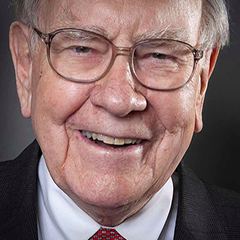When we last published our Power List in 2000, the wind energy landscape looked very different indeed. Since then, billions have been made and lost and investors have come and gone. We’ve tweaked our list this year to take into account not only the reported wealth of the individuals involved, but their influence on our sector. Is your organisation’s major shareholder on the rundown? Read on…
Warren Buffet
Legendary US investor Warren Buffett hit the headlines In December 2013, when his MidAmerican Energy subsidiary made the biggest ever order for onshore wind turbines – a $1 billion order that gladdened executives of German wind turbine maker Siemens.
The turbines are part of Buffett’s previously announced plans to invest $2 billion of wind energy investments into the state of Iowa, which will soon source 50 per cent of its electricity needs from wind energy, and begin exporting that capacity to neighbouring coal states.
Perhaps more importantly, however, it underlines how the cost of wind energy has fallen so dramatically in the US, and elsewhere, to the point that it is now demonstrably cheaper than new coal-fired plants, and new gas-fired generation, and is even challenging existing coal-fired generation on costs.
Now in his ninth decade, Buffett is still doing huge deals. Last year he teamed up with 3G Capital to pick up iconic ketchup maker H.J. Heinz for $23.2 billion, invested nearly $4 billion in ExxonMobil and a Berkshire Hathaway subsidiary bought Nevada’s NV Energy for $5.6 billion. All of this helped boost his fortune by $4.7 billion despite his gift of $2 billion in Berkshire stock to the Gates Foundation in July, bringing his lifetime giving to $20 billion. Secret to his success?
In his investment letter in 2014, he told Berkshire Hathaway shareholders his best investment wasn’t a stock or business, it was buying Benjamin Graham’s book “The Intelligent Investor” in 1949. The book’s simple, logically sound approach changed his financial life, he said. As for his advice to investors today, the Oracle of Omaha said in February, as the S&P 500 again touched record levels, to steer clear of market euphoria and focus on the potential for profits over time.
It’s worth noting that Buffett’s 2006 annual salary was about $100,000, which is small compared to senior executive remuneration in comparable companies. In 2007 and 2008, he earned a total compensation of $175,000, which included a base salary of just $100,000. He lives in the same house in the central Dundee neighbourhood of Omaha that he bought in 1958 for $31,500, today valued at around $700,000 (although he also owns a $4 million house in Laguna Beach, California). In 1989, after having spent nearly $6.7 million of Berkshire’s funds on a private jet, Buffett named it “The Indefensible”. This act was a break from his past condemnation of extravagant purchases by other CEOs and his history of using more public transportation.





























